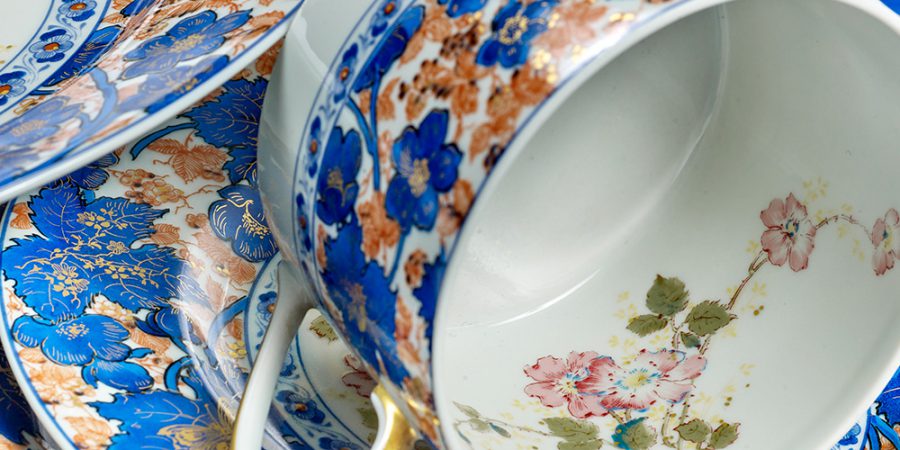Haviland has been creating beautiful porcelain for more than 175 years. David Haviland, the founder of the porcelain manufacturer, started this journey by creating an import company of ceramics and porcelain in 1838 in New York. After becoming captivated by Limousin “white gold,” Haviland moved to Limoges in 1842 and founded his manufacturer. Notable figures such as Empress Eugenie, President Jacques Chirac, Prince Rainier of Monaco, President Roosevelt, and even President Lincoln. Haviland’s history is rich in design, tradition, and, modernity and all this and more is reflected in their heritage collection.

This stunning floral collection was named after its designer, Edouard Dammouse, and was inspired by Japanese prints and silks. Dammouse, a renowned engraver, and watercolorist joined the atelier of Auteuil alongside Félix Braquemond.

Designer Léonce Ribière created this pattern for Empress Eugénie. His pupil, Lassère, reworked this pattern and it later became the foundation of the Impératrice Eugénie that has been produced by Haviland since 1967.

First created in 1974, Louvenciennes was inspired by the Neoclassical pattern first designed in the 18th century by the Sèvres Manufacturer for Marie-Antoinette.

Marthe Ritz Paris was inspired by “Martha,” the dinnerware ordered by Cesar Ritz in 1898 for the grand opening of the Paris Ritz Hotel. This collection is hand-decorated with a Louis XIV-style trim in blue and gold.

This collection was launched in 1998 and pays homage to France’s beautiful blueberry flowers. The Val De Loire has become a classic reference to the history of the Haviland Manufacturer’s heritage.

Designed in the 1960s, this model of Rouart named “Vieux Paris” can be traced back to 1911 in the Haviland archives. The pattern showcases Marie-Antoinette’s preferences and is similar to the design created by the Sèvres Manufacturer from the 18th century.
Admired through generations, the Heritage collections continue their legacies to this day.
